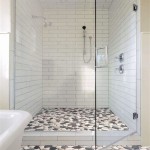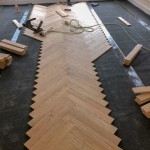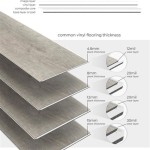Tile to Wood Floor Transition
When two different flooring materials meet, such as tile and wood, a transition is needed to create a smooth and visually appealing connection. There are several types of transitions available, each with its own advantages and disadvantages.
T-molding
is a popular choice for tile to wood floor transitions. It is a metal strip with a T-shaped profile that is installed over the joint between the two flooring materials. T-molding is available in a variety of finishes to match the flooring materials.Reducer
is another option for tile to wood floor transitions. It is a flat metal strip that is installed over the joint between the two flooring materials. Reducers are typically used when the tile is higher than the wood floor.Threshold
is a type of transition that is used when there is a significant difference in height between the two flooring materials. Thresholds are typically made of wood or metal and are installed over the joint between the two flooring materials.Carpet
can also be used as a transition between tile and wood floors. Carpet is installed over the joint between the two flooring materials and can help to create a seamless transition.The best type of transition for a particular application will depend on the specific flooring materials and the desired look. It is important to consult with a flooring professional to determine the best option.
Factors to Consider When Choosing a Transition
When choosing a transition for a tile to wood floor, there are several factors to consider:
- The type of flooring materials: Different flooring materials require different types of transitions. For example, a T-molding transition is not suitable for a transition between carpet and wood flooring.
- The height difference between the two flooring materials: The height difference between the two flooring materials will determine the type of transition that is needed. For example, a reducer is typically used when the tile is higher than the wood floor.
- The desired look: The desired look will also influence the choice of transition. For example, a T-molding transition can create a more modern look, while a threshold can create a more traditional look.
Installation
The installation of a tile to wood floor transition is a relatively simple process. However, it is important to follow the manufacturer's instructions carefully to ensure a proper installation.
To install a T-molding transition, simply place the transition over the joint between the two flooring materials and secure it with nails or screws. To install a reducer, place the reducer over the joint between the two flooring materials and secure it with nails or screws. To install a threshold, place the threshold over the joint between the two flooring materials and secure it with nails or screws.
Once the transition is installed, it is important to caulk the joint between the transition and the flooring materials to prevent water damage.

Smooth Tile To Wood Floor Transitions For A Beautiful Finish

Tile Transition Strips How To Handle Flooring Transitions

Tile Transition Strips How To Handle Flooring Transitions

Understanding Wood To Tile Transitions Flooring Masters Pro Remodeling

Tile To Wood Transition Photos Ideas

Tile To Wood Floor Transition Ideas 11 Clever Ways Atlas Ceramics

Tile Transition Strips How To Handle Flooring Transitions

Smooth Tile To Wood Floor Transitions For A Beautiful Finish

Hexagonal Tile To Hardwood Floor Bathroom Transition Fusion Philadelphia By Dremodeling Houzz

2024 Trends In Tile Flooring Transitions Atlas Marble








